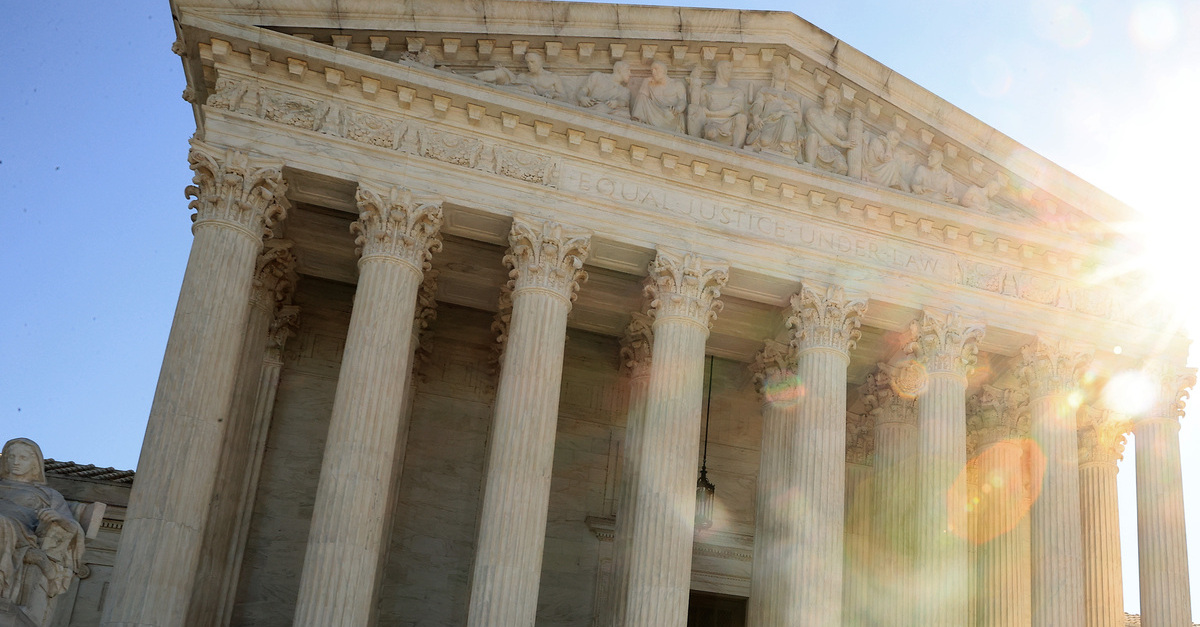
The Supreme Court of the United States handed down a pair of per curiam orders on Monday, both of which said that police officers accused of using excessive force are entitled to qualified immunity. SCOTUS said that two separate circuit courts botched the application of qualified immunity law.
Qualified immunity is a judge-created concept that shields federal and state officials from liability in civil lawsuits. Unless a plaintiff can show that the right of which they were deprived is either specifically codified by statute or else “clearly established” by case law, the government official is immune from the claim.
In the first case, Daniel Rivas-Villegas v. Ramon Cortesluna, the U.S. Court of Appeals for the Ninth Circuit denied officer Daniel Rivas–Villegas qualified immunity. Rivas-Villegas and another officer responded to a 911 call on Nov. 6, 2016 made by the 12-year-old daughter of Ramon Cortesluna’s girlfriend. The girl tearfully told the 911 operator that Cortesluna was trying to hurt her, her 15-year-old sister, and their mother, and that he was using a chainsaw to break things in the home.
When police arrived on the scene, Cortesluna exited the home on the officers’ commands. Officers instructed him to keep his hands raised, but Cortesluna lowered them. Officers then shot Cortesluna twice with a beanbag shotgun — once in the stomach and once in the hip.
As officers approached Cortesluna, they noticed he was armed with a knife. As they began to remove the knife, Rivas-Villegas “briefly placed his knee on the left side of Cortesluna’s back” for approximately eight seconds before lifting him up and walking him away from the door.
Cortesluna sued under 42 U. S. C. §1983, alleging that Rivas-Villegas violated his civil rights by using excessive force. The Ninth Circuit ruled that “Rivas-Villegas is not entitled to qualified immunity because existing precedent put him on notice that his conduct constituted excessive force.”
SCOTUS reversed, saying that “Neither Cortesluna nor the Court of Appeals identified any Supreme Court case that addresses facts like the ones at issue here.” The Ninth Circuit erroneously likened Rivas-Villegas’ actions to a similar but far more serious case in which an officer responding to a noise complaint deliberately dug his knee into a suspect’s back, causing permanent injury. By contrast, Rivas-Villegas was responding to the threat of imminent violence, saw a weapon, and kneeled on Cortesluna’s back only briefly.
In a second decision, City of Tahlequah, Oklahoma v. Austin P. Bond, the justices sided with a second set of officers, ruling that Josh Girdner and Brandon Vick were also entitled to qualified immunity against a claim from the estate of Dominic Rollice.
Rollice’s ex-wife called 911 on Aug. 12, 2016 to report that Rollice was intoxicated and was refusing to leave her garage. Officers familiar with the parties responded to the call. As they confronted Rollice and moved toward him in the garage, Rollice picked up a hammer and raised it as if preparing to throw it at the officers. The two officers shot and killed him.
Rollice’s estate brought an excessive force case 42 U. S. C. §1983, but the district court dismissed the case. The Tenth Circuit, however, reversed, holding that precedent allows an officer to be held liable for a shooting if it is “objectively reasonable” that “the officer’s reckless or deliberate conduct created a situation requiring deadly force.”
SCOTUS reversed the Tenth Circuit’s ruling, holding that it was “unnecessary to decide whether the officers violated the Fourth Amendment in the first place, or whether recklessly creating a situation that requires deadly force can itself violate the Fourth Amendment.” Rather, the justices ruled, the officers who shot Rollice did not violate any clearly established law.
The high court chastised the Tenth Circuit for getting qualified immunity wrong.
“Not one of the decisions relied upon by the Court of Appeals,” reads the opinion, “comes close to establishing that the officers’ conduct was unlawful.”
“To state the obvious,” the high court continues, “a decision where the court did not even have jurisdiction cannot clearly establish substantive constitutional law.”
Qualified immunity has often come under fire for depriving victims of legal recourse. Furthermore, some circuit judges have taken note that Supreme Court has signaled a need to reform the use of the doctrine generally. In an excessive force case last July, Circuit Judge Don R. Willett of the Fifth Circuit noted that, “In recent months, the Court has signaled a subtle, perhaps significant, shift regarding qualified immunity, pruning the doctrine’s worst excesses.”
Justice Clarence Thomas has argued for the need to rethink qualified immunity, in particular because the doctrine affords the same analysis to potentially disparate situations. For now, however, the majority of the Supreme Court appears to be committed to applying qualified immunity despite its assessment that the circuit courts do so incorrectly.
[image via Chip Somedevilla/Getty Images]